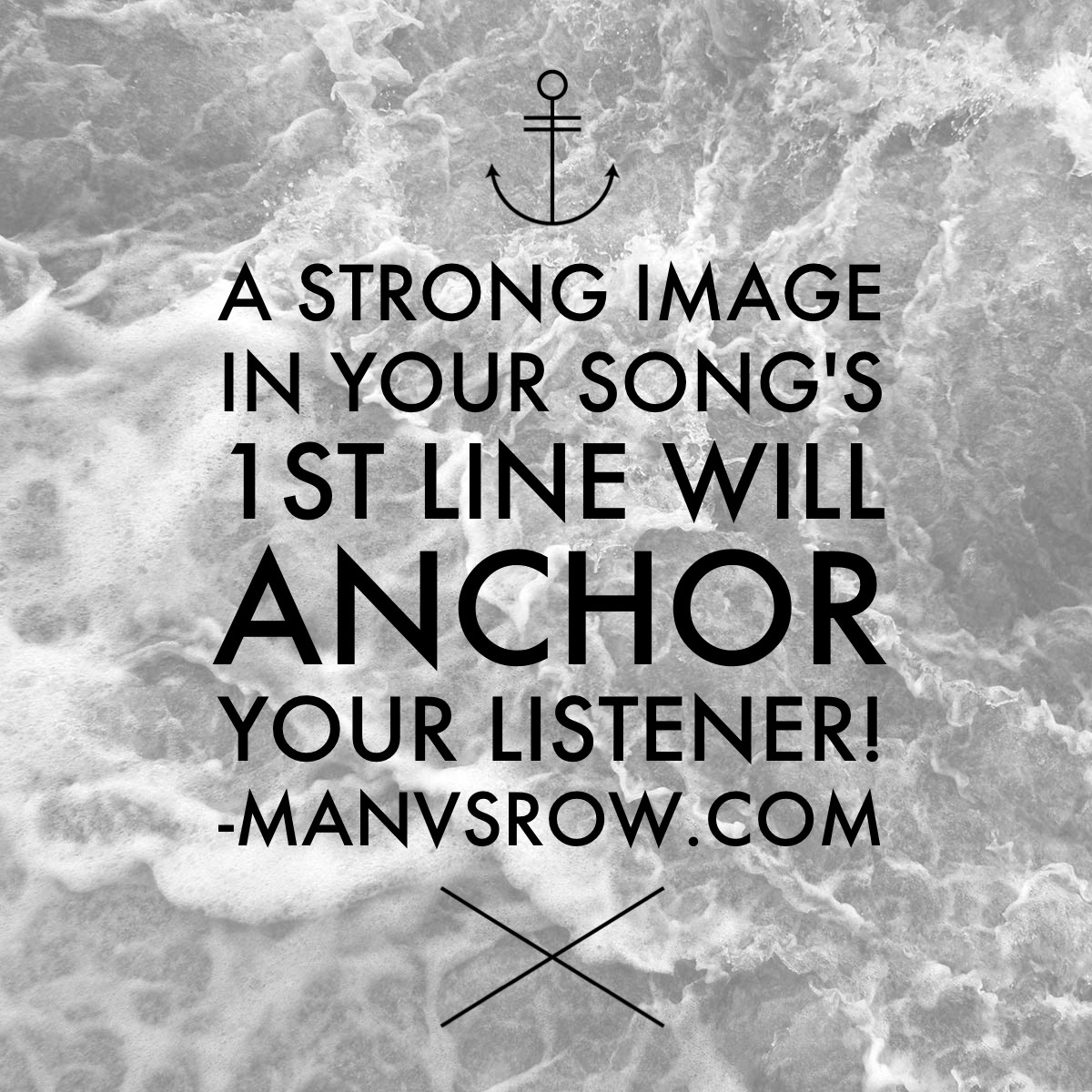
Let me tell you a tale of two cowrites, both from my early “pro” days. First… the bad cowrite.
I was signed with Major Bob Music at the time, and “Monday Morning Church” had recently been a top 5 country hit for Alan Jackson. But in spite of having a publishing deal and a hit under my belt, I was still pretty much a newbie trying to figure things out. (I still feel that way to be honest.) Anyway, Major Bob hooked me up to cowrite with a legit hit songwriter. This guy had many cuts and hits to his credit, and I was honored to get in a room with him.
We met at his publishing company on Music Row. After a little chit chat, he got that familiar look on his face.
“So… got any ideas?” No. Not really.
I mean, I had a bunch of hooks and some ideas, but nothing great. Nothing I was busting a gut to write. And I apparently didn’t have anything that impressed him, either. After I threw out several “shoulder-shruggers,” he said, “Man, we need an idea like ‘Monday Morning Church.'” Too bad. I must have left my stack of “Monday Morning Church” ideas at home that morning.
We chatted some more, eventually moving out to the porch where he smoked a cigarette and I watched my hopes of making a good impression going up in smoke. We called it a day. I call it a failure of preparation on my part. We’ve never written again. For me, I was embarrassed and in no hurry to risk wasting his time again.
Now for the good cowrite.

I met Byron Hill at Chad Green’s ASCAP Country Workshop. And, if I remember correctly, Carla Wallace at Big Yellow Dog Music also helped connect us. We got a cowrite on the books, and I was pumped. Byron has written a bunch of hits including, “Fool Hearted Memory” for George Strait, “Born Country” for Alabama, “Politics Religion & Her” for Sammy Kershaw and many, many more.
I did my homework. I pulled together several ideas and lyrics that I thought he’d like. I really wanted to make a good impression on him. When Byron asked, “So… got any ideas?” I was ready. He loved a lyric sketch I brought in called, “Ring On The Bar,” and we were off to the races.
This first cowrite led to some success and more opportunity. While “Ring On The Bar” hasn’t been a big hit yet, it’s been recorded by John Pierce (RCA), James Dupre’ (The Voice), and has been on hold by several artists, including Brad Paisley.
But the big thing is that Byron and I went on to write several more songs together, including the 2014 Canadian Country Music Awards Single Of The Year (and my first #1) “When Your Lips Are So Close” with Gord Bamford.
Good thing I showed up with a good idea on that first day, huh?
And that brings me to the point of these two stories. I believe that a strong idea is the most valuable thing you can bring to a cowrite (other than Kris Kristofferson). “Well,” you might say, “how come these big-time songwriters didn’t throw out any of THEIR ideas?” Here’s why:
A great idea is really the only thing a newer songwriter has to offer a seasoned pro.
Let’s face it, if you get to write with an established pro songwriter, what do THEY need from YOU?
They have a more valuable name in the business. They have more connections. They most likely bring a higher level of songwriting skill. The only thing they need is a fresh, cool idea or melody. Unless you’re swinging around a big fat record deal, your job is to bring in the idea or the start of a song.
If the pro has a great idea, he surely has several proven, established cowriters who could write it with him. Why risk giving 50% of HIS idea to a songwriter who might not contribute very much?
Let me tell you, it’s more fun (and profitable) when you have a strong answer for “got any ideas?” – and I want you to be prepared when that question comes your way. And that question doesn’t need a good answer ONLY if you get a pro cowrite. That question comes up in EVERY cowrite. Every time you step into the writing room, you have the opportunity to blow away your cowriter with a great nugget or idea.
Feeling like I have a stack of strong ideas allows me to walk into any cowrite with confidence. We might not always write my idea, but I came prepared… and my cowriter knows it and appreciates it.
I want YOU to have that confidence – and those results, too. I want your cowriters to be glad they showed up to write with you. But I DON’T want you to have to go through years of trial, error and the occasional embarrassing cowrite like I did!
I’d love to hear your thoughts on this. Have you had similar success or failures? Please leave a comment!
If you want to become a songwriting pro (in how you think, write songs or do business), then a great place to start is RIGHT HERE. I want to help you on your songwriting journey. I’ve been in the music business for years, and I’m here to help you get the cuts – and avoid the bruises. CLICK HERE TO START HERE.
God Bless and Enjoy the Journey,
Brent
Brent Baxter is a hit songwriter with cuts by Alan Jackson, Randy Travis, Lady Antebellum, Joe Nichols, Gord Bamford, Ruthie Collins, Ray Stevens, and more. He’s written a top 5 hit in the US and a #1 in Canada… so far.
















